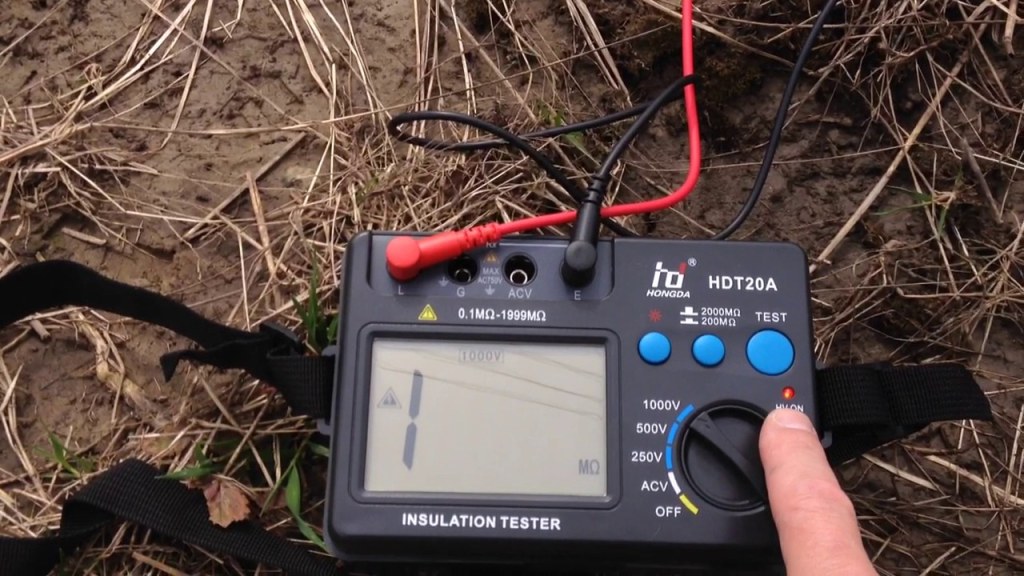Unveiling The Power: Testing Electric Fence With Multimeter – Uncover The Shocking Truth And Take Action Now!
Testing Electric Fence with Multimeter
Introduction
Welcome, Smart Readers! Today, we will be discussing an important topic that revolves around testing electric fences with a multimeter. Electric fences are commonly used to provide security and containment for livestock and pets. However, it is crucial to regularly test the functionality of these fences to ensure their effectiveness and safety. In this article, we will explore the various aspects of testing electric fences with a multimeter, providing you with valuable insights and knowledge. Let’s dive in!
2 Picture Gallery: Unveiling The Power: Testing Electric Fence With Multimeter – Uncover The Shocking Truth And Take Action Now!
Table of Contents
1. What is an electric fence? 🚧

Image Source: instructables.com
2. Who should test electric fences? 👥
3. When should you test electric fences? ⌚

Image Source: ytimg.com
4. Where can you test electric fences? 🌍
5. Why is it important to test electric fences? ❓
6. How to test electric fences with a multimeter? 🛠️
7. Advantages and disadvantages of testing electric fences with a multimeter 🔌
8. Frequently Asked Questions (FAQs) ❔
9. Conclusion 📝
10. Final Remarks and Disclaimer ⚠️
1. What is an electric fence? 🚧
An electric fence is a barrier that uses electric shocks to deter animals or people from crossing a boundary. It consists of several components, including energizers, conductors, insulators, and ground systems. These fences are commonly used in agriculture to contain livestock and protect crops from wildlife intrusion.
Testing the functionality of an electric fence is crucial to ensure its effectiveness in keeping animals within the designated area and deterring potential intruders.
2. Who should test electric fences? 👥
Anyone who owns or manages an electric fence should regularly test its functionality. This includes farmers, ranchers, pet owners, and anyone responsible for the maintenance of electric fences. Testing the fence helps identify any faults or issues that may arise, ensuring the safety and security of both animals and humans.
3. When should you test electric fences? ⌚
Electric fences should be tested regularly to ensure their ongoing functionality. It is recommended to test the fence at least once a month or after any severe weather events that may have caused damage. Additionally, testing should be done before introducing animals to a new area enclosed by an electric fence.
4. Where can you test electric fences? 🌍
You can test electric fences at various locations along the fence line. It is important to test the fence at different points, including the beginning, middle, and end of the fence. This ensures that the entire fence is functioning properly and delivering consistent voltage throughout its length.
5. Why is it important to test electric fences? ❓
Regularly testing electric fences is crucial for several reasons:
a) Safety: Testing the fence ensures that it is providing an adequate shock to deter animals and potential intruders without causing harm.
b) Effectiveness: By testing the fence, you can identify any faults or weak points that may compromise its ability to contain animals or protect your property.
c) Maintenance: Testing allows you to detect any damaged components, such as broken wires or faulty energizers, which can then be repaired or replaced promptly.
d) Compliance: In some jurisdictions, there may be regulations or standards in place that require regular testing and maintenance of electric fences. By testing your fence, you can ensure compliance with these regulations.
e) Peace of mind: Regular testing provides reassurance that your electric fence is functioning as intended, giving you peace of mind regarding the safety of your animals and property.
6. How to test electric fences with a multimeter? 🛠️
Testing electric fences with a multimeter is a straightforward process. Here’s how you can do it:
a) Prepare the multimeter: Set the multimeter to the voltage or AC setting and ensure it is functioning correctly.
b) Test the energizer output: Connect the multimeter leads to the positive and negative terminals of the energizer. It should display the voltage output of the energizer. This step ensures that the energizer is providing the desired voltage.
c) Test the fence wires: Place one multimeter lead on the fence wire and the other on the ground or earth wire. It should display the voltage running through the fence. Repeat this process at various points along the fence line to ensure consistent voltage.
d) Check for faults: If the multimeter displays a low voltage or no voltage at all, there may be a fault or issue with the fence. Carefully inspect the fence, looking for broken wires, loose connections, or damaged components.
e) Repair and retest: If any faults are found, repair or replace the faulty components and retest the fence to ensure proper functionality.
7. Advantages and disadvantages of testing electric fences with a multimeter 🔌
Like any testing method, using a multimeter for testing electric fences has its advantages and disadvantages:
Advantages:
a) Cost-effective: Multimeters are relatively affordable and readily available, making them a cost-effective tool for testing electric fences.
b) Easy to use: Multimeters are user-friendly devices, and even individuals with minimal technical knowledge can learn to operate them for testing purposes.
c) Quick results: Testing with a multimeter provides immediate results, allowing for prompt identification and resolution of any issues.
Disadvantages:
a) Limited functionality: Multimeters may not detect more complex faults or issues in the electric fence system, such as intermittent faults or faults caused by lightning strikes.
b) Lack of precision: Multimeters may not provide precise measurements, especially in situations where the voltage fluctuates rapidly.
c) Safety precautions: When using a multimeter, it is essential to follow safety precautions and avoid contact with live wires or energized components to prevent electric shock.
8. Frequently Asked Questions (FAQs) ❔
Q1: Can I test an electric fence without a multimeter?
A1: While a multimeter is the most reliable tool for testing electric fences, there are alternative methods such as using a dedicated electric fence tester or consulting a professional.
Q2: How often should I replace the batteries in my electric fence energizer?
A2: Battery replacement frequency depends on the type of energizer and its power requirements. Refer to the manufacturer’s guidelines for specific recommendations.
Q3: Can I test an electric fence during rainy weather?
A3: It is generally not recommended to test electric fences during heavy rain or thunderstorms, as it may pose a safety risk. Wait for the weather to clear before conducting any tests.
Q4: Can I test the voltage of an electric fence while it is electrified?
A4: It is not advisable to test the voltage of an electrified fence while touching it as it can lead to electric shock. Use proper safety precautions and avoid direct contact with the fence.
Q5: Is it necessary to hire a professional to test my electric fence?
A5: While it is not always necessary, consulting a professional can provide an expert evaluation of your electric fence system and ensure thorough testing.
9. Conclusion 📝
In conclusion, regularly testing electric fences with a multimeter is crucial for ensuring their functionality, safety, and effectiveness. By following the outlined testing process and addressing any faults or issues promptly, you can maintain the integrity of your electric fence and provide security for your animals and property. Remember, testing should be done at regular intervals and after any significant events that may impact the fence’s operation. Stay vigilant and prioritize the well-being of your livestock and pets!
10. Final Remarks and Disclaimer ⚠️
Testing electric fences with a multimeter requires a basic understanding of electrical systems and safety precautions. Always exercise caution and follow the manufacturer’s instructions when testing or working with electric fences. This article serves as a general guide, and it is recommended to consult professionals for specific advice or assistance. The author and publisher disclaim any liability for any damages or injuries that may occur as a result of following the information provided in this article.
This post topic: Electric



